1.7: Language Development- Promoting Speaking, Listening and Communicating
- Last updated
- Save as PDF
- Page ID
- 161654

- Christine Pegorraro Schull, Leslie La Croix, Sara E. Miller, Kimberly Sanders Austin, and Julie K. Kidd
- Virtual Library of Virginia
\( \newcommand{\vecs}[1]{\overset { \scriptstyle \rightharpoonup} {\mathbf{#1}} } \)
\( \newcommand{\vecd}[1]{\overset{-\!-\!\rightharpoonup}{\vphantom{a}\smash {#1}}} \)
\( \newcommand{\id}{\mathrm{id}}\) \( \newcommand{\Span}{\mathrm{span}}\)
( \newcommand{\kernel}{\mathrm{null}\,}\) \( \newcommand{\range}{\mathrm{range}\,}\)
\( \newcommand{\RealPart}{\mathrm{Re}}\) \( \newcommand{\ImaginaryPart}{\mathrm{Im}}\)
\( \newcommand{\Argument}{\mathrm{Arg}}\) \( \newcommand{\norm}[1]{\| #1 \|}\)
\( \newcommand{\inner}[2]{\langle #1, #2 \rangle}\)
\( \newcommand{\Span}{\mathrm{span}}\)
\( \newcommand{\id}{\mathrm{id}}\)
\( \newcommand{\Span}{\mathrm{span}}\)
\( \newcommand{\kernel}{\mathrm{null}\,}\)
\( \newcommand{\range}{\mathrm{range}\,}\)
\( \newcommand{\RealPart}{\mathrm{Re}}\)
\( \newcommand{\ImaginaryPart}{\mathrm{Im}}\)
\( \newcommand{\Argument}{\mathrm{Arg}}\)
\( \newcommand{\norm}[1]{\| #1 \|}\)
\( \newcommand{\inner}[2]{\langle #1, #2 \rangle}\)
\( \newcommand{\Span}{\mathrm{span}}\) \( \newcommand{\AA}{\unicode[.8,0]{x212B}}\)
\( \newcommand{\vectorA}[1]{\vec{#1}} % arrow\)
\( \newcommand{\vectorAt}[1]{\vec{\text{#1}}} % arrow\)
\( \newcommand{\vectorB}[1]{\overset { \scriptstyle \rightharpoonup} {\mathbf{#1}} } \)
\( \newcommand{\vectorC}[1]{\textbf{#1}} \)
\( \newcommand{\vectorD}[1]{\overrightarrow{#1}} \)
\( \newcommand{\vectorDt}[1]{\overrightarrow{\text{#1}}} \)
\( \newcommand{\vectE}[1]{\overset{-\!-\!\rightharpoonup}{\vphantom{a}\smash{\mathbf {#1}}}} \)
\( \newcommand{\vecs}[1]{\overset { \scriptstyle \rightharpoonup} {\mathbf{#1}} } \)
\( \newcommand{\vecd}[1]{\overset{-\!-\!\rightharpoonup}{\vphantom{a}\smash {#1}}} \)
“Language is the most powerful instrument of human progress.” -Maria Montessori
Opening Vignette: Block Tower
Eighteen-month old Mark settled into a day of learning after being dropped off. He greeted his teacher, Ms. Claudia (quick hug), and said “Hi” as he looked expectantly at his classmates in the block area. At one point, he put his hand out, clenching and unclenching as he reached for a large rectangular block. When Mark was finished with his block tower, he said, “Look!” and pointed to it, smiling proudly while looking at the teacher. As Ms. Claudia looked and smiled, he said, “I did it” and knocked the blocks to the ground while laughing.
Introduction
Speaking, listening, and communicating are vital to our ability to connect with the world. A baby’s first words are often cause for celebration. Pointing and gesturing create opportunities for adults to meet a child’s needs and see the resulting satisfaction on the child’s face. In addition to verbal words, there may be sign language, and important pragmatic gestures such as kissing on the cheek when greeting, or raising or lowering one’s eyes. These language exchanges not only foster understanding, but they are also social interactions that may create or strengthen bonds. Unquestionably, the ability to communicate rests upon the ability to express oneself, receive information, and to negotiate the social aspects of communication. In the example of Mark and Ms. Claudia, we see several components of language displayed. We see that Mark is using some words and phrases (hi, look, I did it) as well as communicating his wishes nonverbally through pointing and motioning toward the blocks. Mark also communicated using facial expressions and eye contact. This chapter will explore the following questions:
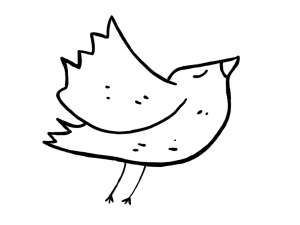

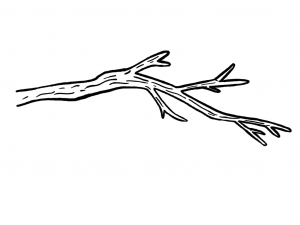 How is language conceptualized?
How is language conceptualized?
 What are the components of language?
What are the components of language?
 How does children’s language progress on a continuum of development?
How does children’s language progress on a continuum of development?
 How do individual differences influence language development?
How do individual differences influence language development?
 What can early childhood educators do to promote children’s language development?
What can early childhood educators do to promote children’s language development?
Conceptualizing Language Development
Language can be understood as a series of meaningful exchanges to communicate information, including sounds and sign language (Vygotsky, 1986). Toppelberg and Shapiro (2000) indicate language is comprised of sounds, the way these sounds are organized into words or parts of words, the organization of concepts being communicated, and language usage. This definition can be expanded to include expressive and receptive signals and the exchange between language partners. Receptive language reflects what a child is taking in as information is passed to them. Productive and expressive language are terms that are used interchangeably to indicate that the child is creating their own signals to communicate. Finally, there is a transactional component to language that includes not only the speaker’s intent, but also the receiver’s ability to comprehend what is being said, and the signals that indicate that the information has been received. Language is verbal and non-verbal, developing before a child is even born. Theoretically and practically, language is a reflection of our cognition and a mechanism that helps us solve problems. Language emerges from our environment, and we use it as a medium both to understand (other people and ourselves) and to be understood. It is cultural, nested in our context, and because it fosters our ability to connect with others, deeply profound. Researchers and theorists explore a variety of questions when considering how language develops in children.
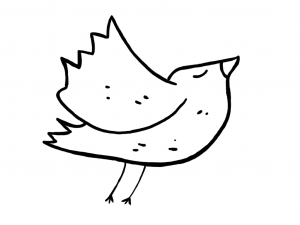 7.2a Is Language Innate?
7.2a Is Language Innate?
Nativist theory suggests that we are prewired to learn language through an invisible framework, acting as an internal map. Noam Chomsky (1968), who invented this theory, believed that human language is complex and we could not learn it unless we already had a pre-existing physiological structure to prepare us. In effect, Chomsky is suggesting that we have an inborn structure for language, in the same way that we have a skeleton providings structure for our physical growth and development. Chomsky called this the “Language Acquisition Device.” As evidence for his theory, Chomsky points to the fact that all over the world, humans develop language patterns with similar features such as verbs and nouns, called universal grammar. When children are exposed to language, it activates the language acquisition device, but our propensity for language is pre-existing. In fact, Chomsky describes language development as one would describe physical growth, as opposed to how one would describe learning. Chomsky is essentially saying that although the environment is important, it is only strengthening something that already exists. This theory of language development is heavily focused on the biological, or nature, part of development.
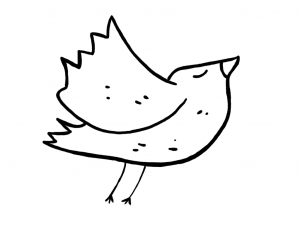 7.2b Does Language Have Stages?
7.2b Does Language Have Stages?
According to Piaget’s Cognitive Developmental theory (Piaget, 1962), as the child grows and develops, they moves through normative, or predictable stages of growth. This growth process allows and compels children to build their own internal categories and rules of language. These internal structures, called schemes, become more complex as children interact with their environment to construct their knowledge. One illustration of this is that a child’s understanding of the rules of language change and become more sophisticated as the child develops cognitively. For example, young children have a tendency to overregularize a word, such as calling all four-legged animals, “doggie.” Eventually, as their cognitive schema becomes more complex, they recognize that four-legged animals have other distinguishable characteristics and can differentiate animals using this knowledge. Language then, is a display of the child’s cognitive understanding. Language development reflects a complex interplay of opportunities and experiences. Accordingly, there are wide ranges in when children acquire or demonstrate particular language skills.
 7.2c Does Social Interaction Create Language? (NEST)
7.2c Does Social Interaction Create Language? (NEST)
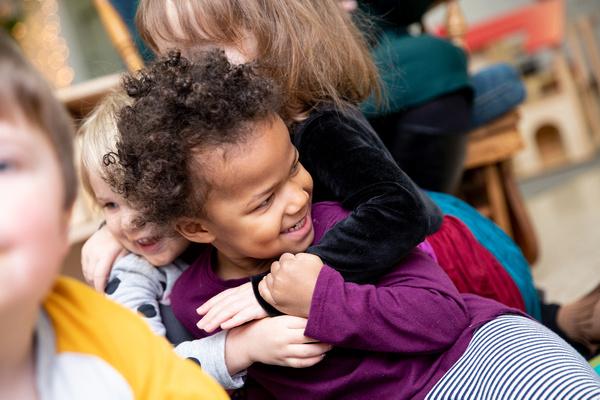
Language helps us to connect with others and communicate our thoughts and purposes. Language is a series of social transactions. Lev Vygotsky (1986) described this process in his seminal work, Thought and Language, where he indicates that children have social exchanges of meaning that help them to unite their ideas and speech, termed verbal thought. In this series of cooperative exchanges, adults support children by preparing, creating, and providing environments and events. These transactions become pivotal to how children construct their learning with the helpful support of a conversational partner. Children may be serving as the more experienced partner as they engage in transactions with less experienced peers or learn new expressions from their interactions with others. Vygotsky might argue that using “doggie” to describe all four legged animals creates opportunities to hear other animal names through social interaction. Indeed the act of conversation itself might help the child learn to self-correct and expand their understanding over time. Vygotsky also indicates that this language learning takes place in a social context, influencing how and where children learn to apply their verbal thoughts to interactions. In the Vygotskian view, language is less a reflection of learning, than a tool for solving problems, socialization, and completing tasks.
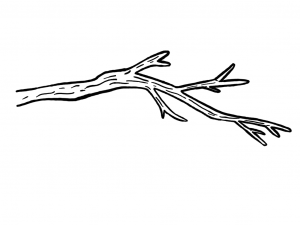 7.2d How Is Language Reinforced In The Environment?
7.2d How Is Language Reinforced In The Environment?
Behaviorism theory of language development (Skinner, 1957) suggests that children learn about communication through a series of interactions where the sounds they make, the words they produce, and the gestures they use, are resultant from imitation and subsequent reinforcement. This reinforcement, whether positive, negative, or neutral, directs the language a child values and replicates. Children may produce utterances at random, but when we give children positive cues, it strengthens the likelihood that the child will repeat those utterances intentionally (Menn & Stoel-Gammon, 2005). For example, a babbling infant who says, “mamamamama” may be reinforced by an enthusiastic mother who smiles and becomes animated as she says, “That’s right! Mama!” In other words, the feedback cues in the child’s environment influence their language development.
Pause and Consider: Is Language a Reflection or a Tool?
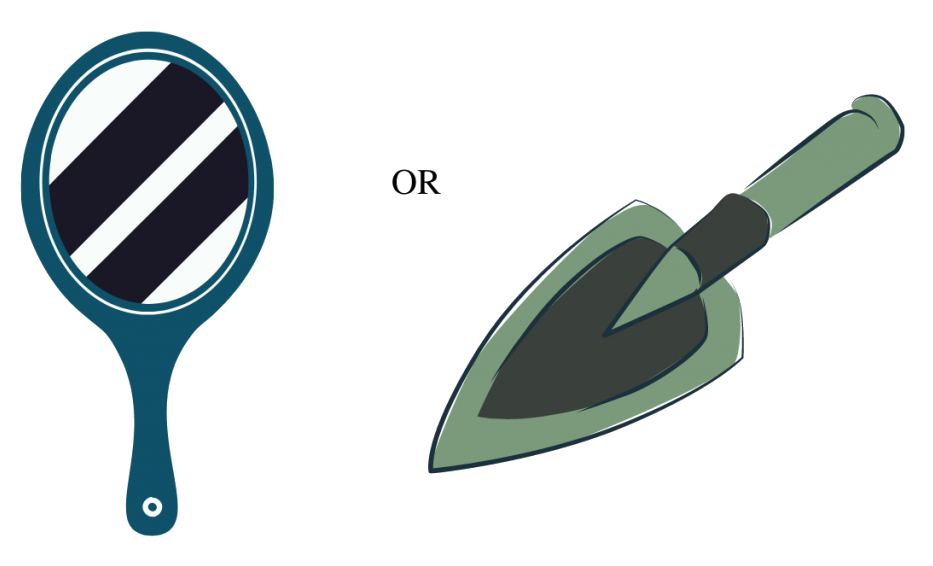
Five-year-old Hassan sat on the floor with both feet pushed into untied shoes. As he handled the laces, he said aloud, “First you loop the bunny ears, and then you fold them over. Pull it…Ah! I have to try again.” The teacher came over and asked Hassan, “Do you want help?” He replied, “I can do it.” The teacher then encouraged Hassan to keep trying. After several iterations of trying to make bunny-eared shoelaces into tied shoes, Hassan was successful. Upon noticing Hassan’s tied shoes, his teacher exclaimed, “You did it! Great job hanging in there. You kept trying until you did it.” As you consider Hassan’s words, can you see ages and stages reflected in his vocabulary? In this instance was the language being used as a reflection of Hassan’s thoughts? Or was it a tool that helped Hassan to complete the task? What was the role of the social interaction between Hassan and his teacher?
Components of Language
Language can be broken into four domains: phonology, grammar, semantics, and pragmatics. These four areas refer to the sounds of language (phonology), how the sounds are put together (phonology and grammar), the meaning/content (semantics), and the use of the language (pragmatics) (Bloom & Lahey, 1978). Each of these domains includes the expectation that the language users will produce, receive, and comprehend the language.
Phonology
Phonology is the ability to distinguish and create the sounds of language (Bloom & Lahey, 1978). Phonemes are the smallest units of language, representing individual sounds. For example, the word “chip” has three phonemes: /ch/ /i/ /p/. Each of these three sounds is a phoneme. A phoneme focuses on the sound only, without regard for the letter or letter combinations. It is simply the components of sound that we hear in language. Children display phonemic awareness by attending to these sounds, demonstrating the ability to hear and isolate them. Phonics is the area of phonology that emerges last, as children match sounds to letters and groups of letters.
Grammar
Grammar is the combination of how individual words and sounds are combined to express meaning (Bates et al, 1992). Grammar rules guide how words are combined to communicate information. Grammar includes morphology and syntax. Morphology focuses on the structure within the word, and allows for the creation of complex words and phrases. For example, many words can be made plural by adding “s” to the end of a word (e.g., bird and birds). Morphemes are the smallest units of language that contain meaning. Some prefixes and suffixes of words contain their own meaning, such as “un” or “ing” in the words, “undo,” “untie,” or “doing,” “tying.” Young children frequently make mistakes in this area by applying a morphological rule in all instances (Bates et al., 1992). For example, a child might say, “I saw the deers” (plural /s/) or “I wented there” (past-tense /ed/). These rules are complex and numerous and children apply these rules as best as they can given the constraints of what they have already learned. Syntax governs our grammatical structures such as word order and phrasing. The meaning of “Mommy feeds Brother” is different than “Brother feeds Mommy.” Infants show recognition of word order changes (Karmiloff & Karmiloff-Smith, 2001), and eventually learn to express word order differently to vary their message. A child may say, “Mommy phone” to simply indicate that the phone belongs to mom, or may say, “Phone Mommy” to indicate the phone is lighting up or ringing. A father volunteering in a room of four-year-olds will find that he is universally addressed by his child’s classmates as “Isaiah’s dad.” The use of the /s/ to indicate possession on the end of Isaiah is a morpheme. “The child’s understanding that the order of the two words is ‘Isaiah’s dad’ as opposed to “dad Isaiah’s” is a usage of syntax.
Semantics
Semantics is the study of meaning, including vocabulary (Bates et al., 1992). Semantics may focus on the significance of an individual word or the meaning of particular words in the context of an entire sentence. As an illustration, the word “friend” may be a noun, as in “I have a friend.” Friend may also be a verb when speaking about social media, “I will friend you.” The meanings have some similarities, representing a connection to another person, but the usage creates a difference in whether we are speaking about the actual person or speaking about the connection to the person. Semantics also include nonverbal aspects of words such as intonation and gestures. For example, “whatever” can be an innocuous answer denoting many possibilities, “What can I eat from the snack table?” “Whatever.” In this case, it indicates that the child is welcome to eat anything from the table. With a change of pitch and emphasis and tone of voice, “whatever” can signal strong disapproval. “I didn’t know I was not allowed to have that.” “Whatever!” Vocabulary building is a crucial part of learning and understanding semantics. Infants will not comprehend everything that they hear in the early months and weeks, but they will notice the way that words are delivered and the corresponding content. Exposure to rich opportunities normalizes the use of the words introduced, which are of course, entirely contextual. For example, three-year-old Alyssa was given the choice between naptime with her bear and her blanket, or her book and her blanket. In response, she told her mother, “I want another ‘ternative.” Alyssa has learned that the vocabulary word, “alternative” is used to indicate a choice, and she can use the word “alternative” even when she cannot pronounce it. The variety of words that children are exposed to, and how they are drawn into conversations, influences individual differences in the rates at which children learn words (Karmiloff & Karmiloff-Smith, 2001). The quantity and quality of opportunities matter deeply. All children are exposed to the language the adults around them choose for them, which is why it is important that early learning settings provide rich and varied opportunities for children to be exposed to word meanings and word usage.
Pragmatics
Pragmatics is the social or transactional use of language, including context of the conversation. It encompasses not just what we say, but how we say it and to whom (Bates et al, 1992). Pragmatics includes rules of courtesy, turn taking, and the practical aspect of communication. Knowing that you should answer a question when a question is asked, is an example of pragmatics. Another instance would be knowing that one should stay silent in particular situations or stay on topic during a conversation. Using different communicative styles that suit different language partners is a key component of pragmatics. One may greet a friend by saying, “Hey!” But, one greets a boss by saying, “Good morning.” Pragmatics can also be non-verbal, such as in the use of eye contact. Children may learn at an early age that an appropriate greeting would be to kiss someone once on each cheek or to nod politely. These expectations include an understanding of culture and of conversational role. For example, a child may recognize over time that family members or others with a shared heritage should be greeted with the cheek-kiss greeting, but that someone outside of this would be greeted differently. Essentially, pragmatics includes the ability to predict and notice cues from the other person, including words, gestures, and non-verbal cues, and to react accordingly.
Pause and Consider: I no like it: go-fish.
Two and a half year old Imani wandered over to the table, where snack was being prepared. She noticed orange goldfish-shaped crackers being poured out onto a paper napkin. She wrinkled her nose, shook her head and emphatically said, “I no like it: go-fish.” She walked over to the teacher, put her hand on the teacher’s arm, and protested, “I no like it: go-fish!” The teacher acknowledged Imani and said, “You do not like goldfish. We have pretzels too.” Imani shouted, “Petzas! Petzas!” The teacher then replied, “I will give you pretzels.”
Imani’s manner of expression is dictated by her relationship with the teacher and the pragmatic conversational patterns that they have already established. When Imani placed her hand on the teacher’s arm, she was signaling the importance of her message. The meaning of “Petzas” denotes a semantic understanding about what Imani wants. As you consider Imani’s language exchange, how is phonology reflected in Imani’s pronunciation? How is her understanding of grammar evident in her word choice and order?
Developmental Patterns of Language
Children acquire language at their own pace, mastering the components of language as they develop. The entirety of their developmental journey is filled with cues that they give to and receive from others. Children’s individual development has biological, environmental, and contextual influences. This voyage is profoundly different for each child based on their language experiences, which impart meaning to their attempts at communication. Even with individual differences, there are some predictable patterns. Language development occurs as children develop receptive and expressive language in ways that foster social communication, and there are identifiable stages or windows of growth.
Receptive Language
Receptive language can be defined as “how we receive information and understand words and their meaning” (Virginia Department of Education, 2021). For the purpose of this textbook, receptive language is the ability to understand information transmitted by others. This includes understanding the words or sentences one hears as well as the meaning of what is communicated through gestures or signs, or in written form. Receptive language implies comprehension of the material being received, and it develops prior to expressive language (Bloom & Lahey, 1978). We generally understand more words than we use. All humans have more receptive than productive vocabulary, whether using their home or a new language (Cleci-Murcia & Oshtain, 2001). Receptive language requires knowledge of the meaning of the gestures or words being communicated (McGuiness, 2005).
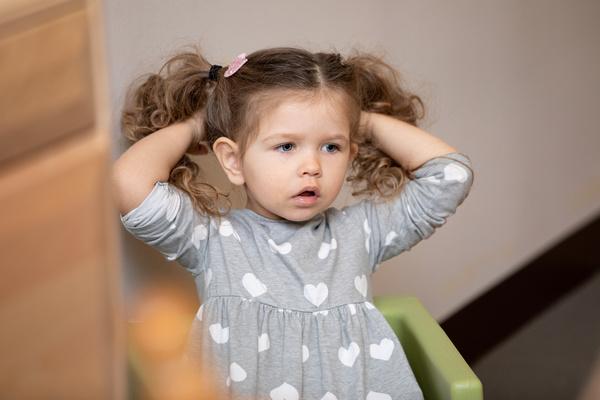
There is some evidence that we do respond to sounds prenatally, indicating that receptive language begins before birth. Babies in utero may sometimes respond to a loud noise, suggesting that they can hear (Marno et al., 2016). In addition to sound, there is evidence that babies are learning patterns of speech and react in the womb by kicking or demonstrating elevated heart rate (Karmiloff & Karmiloff-Smith, 2001). This early exposure results in a preference for language or native tongue of the mother in a newborn (Marno et al, 2016). Babies show a change in their heart rate when a speaker uses their mother’s native tongue compared to a speaker using a different language (Minai et al, 2017). Newborns even change their thumb-sucking rhythm and pattern in response to the language and the speakers they hear (Karmiloff & Karmiloff-Smith, 2001).
Parents engage infants in language that differs from other points in the life cycle. They speak to babies using high-pitched voices with exaggerated pronunciation and movements (Koester & Lahti-Harper, 2010). This child directed speech is also referred to as motherese or parentese, although it is used by other adults besides parents. Hearing infants respond to child directed speech with greater alertness and exclamatory sounds. Parents who use sign language also demonstrate a form of child directed speech with exaggerated movements and facial expressions (Masataka, 1996). Child directed speech is purposeful, and demonstrates attentiveness toward the infant (Koester & Lahti-Harper, 2010), but it is impossible to truly say if it is occurring because the parent initiates or the child elicits the exaggerated response. Either way, it is clear that there is something innate about our desire and capacity for connection which is reinforced in our early communication attempts. In other words, we bring our preadapted language capacity into the world, and the environment in turn shapes our development in these areas.
During infancy the child amasses an understanding of the sounds required for the language they are exposed to. Children are born with the capacity to produce and distinguish the sounds required for all languages, though they prefer their home language (Marno et al, 2016). Within one year, their brains begin to strengthen the connections they need to support their home language, and prune away or disuse the connections that do not help them meet their communicative goals. By 10 months of age, their ability to distinguish among sounds that are not in their home language has diminished (Conboy & Kuhl, 2011), though this loss does not occur in their native tongue. This process of distinguishing the sounds of one’s native language strengthens the ability to learn language overall (Kuhl et al, 2005). Receptive language is developmental, and benchmark timeframes overlap each other as seen in the tables below.
Developmental Progression: Receptive Language
|
Developmental Progression |
CLLD1.2 Using Vocabulary and Nonverbal Cues to Communicate |
|---|---|
|
Early Infancy 0-8 months |
|
|
Later Infancy 6-14 months |
|
|
Early Toddler 12-24 Months |
|
|
Later Toddler 22-36 Months |
|
|
Early Preschool 34-48 Months |
|
|
Later Preschool 44-60 Months |
|
Productive or Expressive Language
Productive or expressive language is how we use vocabulary to describe objects, actions, and events. In this textbook, expressive language includes the language we produce to communicate our meaning and messages to others. This can occur through the use of verbal or non-verbal sounds, gestures, words, or written language. Expressive language and productive language are interchangeable terms that imply that the child is expressing or producing language for the purpose of having their intent understood. Expressive language develops later than receptive language (Celci-Murcia & Oshtain, 2001) and one’s expressive or productive vocabulary is less than receptive vocabulary. As Celci-Murcia & Oshtain (2001) point out, expressive language usage implies receptive language mastery, but the reverse is not necessarily true. Infants show recognition of common daily words long before they produce their own first words. Children turn their head at hearing their own name before they can say it, and they will eagerly clasp and unclasp their hands upon hearing that they are about to eat a preferred familiar food.
7.4b1 Preverbal stages of language development. Language development occurs along a trajectory that begins with preverbal expression. Productive/expressive language evolves through stages that move from early sounds to word formation. Stark (1986) created a framework for describing expressive language, outlined in the table below.
Stark’s Five-Stage Framework
|
Stage |
Stage Name |
Age of Onset |
Characteristics |
|---|---|---|---|
|
Stage 1 |
Reflexive crying and vegetative sounds |
At birth |
|
|
Stage 2 |
Cooking and laughter |
6-8 weeks |
|
|
Stage 3 |
Vocal play |
Between 17 and 30 weeks |
|
|
Stage 4 |
Canonical/reduplicative |
7-9 months |
|
|
Stage 5 |
Non-reduplicative babbling |
10 months |
|
Our first vocalizations are cries, beginning at birth, and reflect our preverbal language production. While it may begin as an instinct, these early cries let a caregiver know that a baby is distressed and requires care. This certainly is an early form of communication. Over time, children add other types of sounds to their collection whether accidental, such as a sneeze, or intentional such as a grunt. The first stage reflexive crying and vegetative sounds, includes vocal cord vibrations, burping, and blowing, and other sounds made accidentally or on purpose (Stark, 1986).
The second stage begins between 6 and 8 weeks and includes cooing and laughter. Children in this stage sound a bit like owls as they repeat these vowel sounds over and over (Menn & Stoel-Gammon, 2005). During this stage, children begin to laugh and signal their pleasure through use of the social smile that emerges sometime between 4 and 8 weeks.
The third stage, vocal play, emerges when children are between 17 and 30 weeks old. In vocal play children make vowel sounds and other sounds including consonants or friction sounds, such as by blowing raspberries or clicking their tongue. In this stage, children also add consonant sounds to their cooing, called babbling (Fagan, 2015). These preliminary attempts, called marginal babbling, see children producing some consonants with vowel sounds, but without true syllables. A child may produce consonants at the front of the mouth, such as “buh”, but might not necessarily produce the vowel sound in a clearly distinguishable way.
The fourth stage, canonical or reduplicative babbling emerges when children are between 7 and 9 months old, and is distinguished from the previous stage by distinct syllable sounds. Babbling becomes more complex over time, taking on closer approximations of words, and the rhythms and pitches of the home language (Lipkind et al, 2013). This more complex version of babbling is called variegated babbling (Gratier, et al, 2015) or canonical babbling (Vihman & Greenlee, 1987).
The fifth stage, nonreduplicative babbling is the production of sounds that sound very much like language, even if the words do not match. Children use distinctive consonant combinations, and the rhythm and pitch of the language sounds like speech. In addition, parents and children engage in communicative exchanges called protoconversation (Gratier, et al, 2015). Protoconversation occurs when the baby coos or babbles and the parent responds to the baby. Even though the conversation may not communicate a particular meaning, or could appear to be nonsensical, it is actually very helpful as children are hearing language sounds, learning about conversational turn taking, and learning that someone will listen to them.
7.4b2 Holophrases/single words. Holophrases/single words appear as children move from babbling to producing more organized and familiar sounds. The sounds that children use for babbling, may be sounds that they hear in language and can mimic, but may also represent their first words (Menn & Stoel-Gammon, 2005). This may occur even if it is hard to recognize the word from an adult perspective. Examples of this may be a sibling’s name that is hard to pronounce such as “La-la” for “Greta” or “Go” for the more difficult to pronounce “John.” In addition, a child may use a word to denote a whole phrase or intention they are meaning to communicate. For example, “Fue-da” (an approximation of “afuera” which means “outside” in Spanish) may communicate that the child wants to go outside. In a seminal study of parents and children from three cities, Bates et al, (1994), project that children may utter their first word as early as eight months, increasing to a vocabulary of approximately 10 words at the end of the first year, and 312 words by the time they are at the end of the second year. Productive language includes signs and gestures, and as with receptive language development, has a trajectory that allows for individual differences.
There are substantial individual differences in language development over time. Some children show evenly distributed growth in vocabulary, while other children exhibit a vocabulary “burst” (Bates et al, 1992). Just as physical development has a range of normativity (e.g., walking between 10 and 16 months) language development also has ranges for demonstrating communication skills, as outlined in the chart below.
7.4b3 Two–word phrases. Two-word phrases emerge as children master single words, then start to put them together in combination, “Me Cookie!” The developmental range for this is approximately 14 to 24 months with 20 months reported as the mean age (Bates, et al, 1992). There is a strong relationship between the development of words and word combinations, however there are variations in how children combine words to use language. In previous research, approximately 20% of children produced combinations of words with vocabularies under 50 words, while another 15% of children were not producing any word combinations even though their vocabularies were between 100 and 300 words (Bates, et al, 1992). Children typically add words to the two word combinations in phrases that first appear without grammar elements (Fenson et al, 1994). For example, when Imani said, “I no like it: go-fish (goldfish),” this demonstrates how a child uses short phrases to communicate their ideas without following grammatical rules.
Table 7.3 “Expressive Language”
Expressive Language
|
Developmental Progression |
CLLD1.2 Using Vocabulary and Nonverbal Cues to Communicate |
|---|---|
|
Early Infancy 0-8 months |
|
|
Later Infancy 6-14 months |
|
|
Early Toddler 12-24 Months |
|
|
Later Toddler 22-36 Months |
|
|
Early Preschool 34-48 Months |
|
|
Later Preschool 44-60 Months |
|
Social Language
Language cannot be considered outside of its social role as the purpose of language is to understand and be understood. This carries with it the weight of expectations, hopes, needs, and wishes. How we use sounds, gestures, and actions to communicate are social in nature. Conversations after all, must eventually have conversational partners. Vygotsky emphasized the transactional nature of language as he considered the influence of the social world on our cognitive development. Vygotsky emphasized that language was a tool for learning, rather than merely a reflection of what the child knows (1986). In fact, the conversational style of those nearest the child influences their language development as they mimic those around them. Adult behaviors such as expanding children’s utterances, and recasting and commenting on these utterances, is helpful for growth. Parents also differ in their conversational style, and so do siblings. Social language indicators include things like responding and turn-taking, or other signs of pragmatic language. Children’s language develops when they have experiences with conversational partners who engage with them and nurture their growth.
Table 7.4 “Learning and Engaging in Conversational Interactions”
Learning and Engaging in Conversational Interactions
|
Developmental Progression |
CLLD1.3 Learning and Engaging in Conversational Interactions |
|
Early Infancy 0-8 months |
|
|
Later Infancy 6-14 months |
|
|
Early Toddler 12-24 Months |
|
|
Later Toddler 22-36 Months |
|
|
Early Preschool 34-48 Months |
|
|
Later Preschool 44-60 Months |
|
Table 7.4 is from Virginia’s Early Learning & Development Standards (ELDS): Birth-Five Learning Guidelines. It is used with permission of the creators and is not an open education resource covered by a Creative Commons License.
Language Differences in Children
Developmental language progression tables show typical patterns of language acquisition. However, many children’s language abilities develop according to different timelines. Common areas of language differences might include children who are multilingual learners, children who are deaf or hard of hearing, and children who have autism. Some children may exhibit language delays or speech delays and show marked differences in how and when they communicate. Understanding the typical developmental patterns allows educators to recognize when additional intervention service providers may need to be engaged. While early childhood teachers should not be expected to diagnose language delays, familiarity with language development does help teachers to determine when to suggest a referral for an evaluation and how to contextualize children’s language attempts and proficiency.
7Children Who Are Multilingual Learners
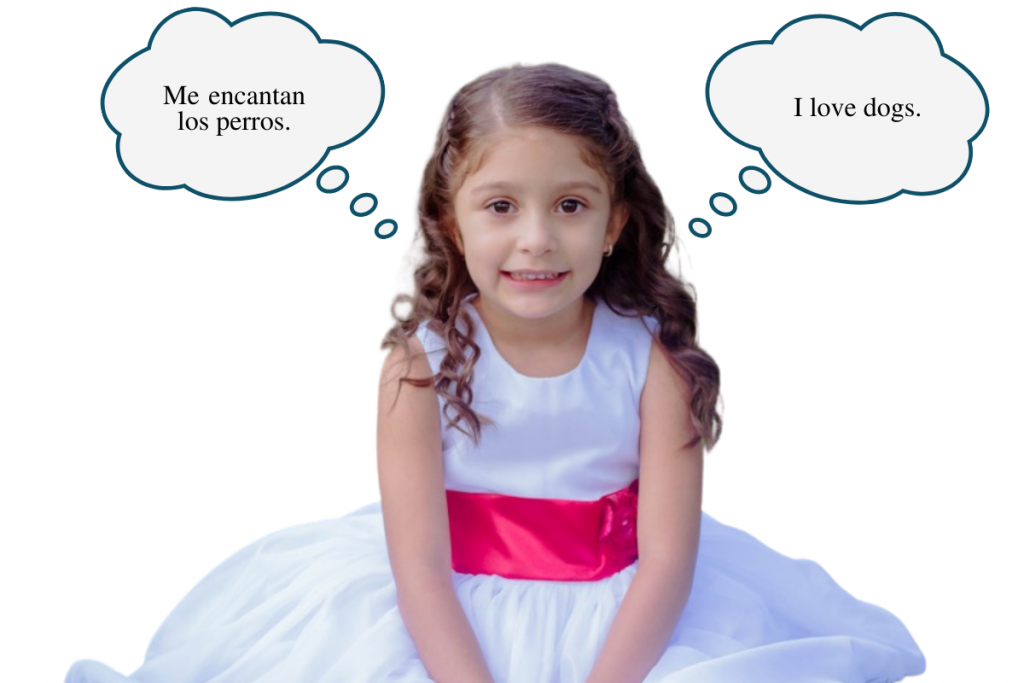
Children who begin learning more than one language prior to the age of five are defined as dual language learners (McManis, 2012). This text uses the term multilingual learners because it is more inclusive and recognizes that some children may speak more than two languages across their home, school, and community environments. Some children are exposed to more than one language from birth, and others are introduced to a new language upon entry to an early learning setting (Castro, Garcia, & Marcos, 2013; Genessee, 2010). English Language Learner is another term used to describe a child who is immersed in English at formal school entry or later and whose home language is not English (Halle et al, 2012). In other words, when the exposure to a different language occurs during the preschool years and younger, we would define them as multilingual learners. Once they enter the K-12 education system, they may be identified as English Language Learners. Recognizing that some children will come to classroom contexts with more than one language is important because when children are learning more than one language, their trajectory of development differs from that of monolingual children.
7.5a1 Receptive language in multilingual children. Young children have a pre-wired or innate capability of learning more than one language from birth, and young children may become proficient in more than one language if multiple language exposure occurs in quantity, and with quality (Espinosa, 2013). Infants who are bilingual develop two separate but connected linguistic systems (Conboy, 2006). Because bilingual children must develop neural pathways and connections that are different from monolingual children, their cognitive development will also look different from that of monolingual children. Research demonstrates that acquiring multiple languages influences cognitive and linguistic learning mechanisms (Espinosa, 2013) and results in advantages that are evident in cognitive development (Bialystok, 2009).
7.5a2 Productive/expressive language learning in multilingual children. As children enter new language environments or negotiate multiple languages, educators may notice differences in expressive language. Listening and comprehension tend to develop first. Educators may notice a child appears reticent to engage verbally in a new language environment preferring to silently observe and listen to their peers and educators talking around them. Frequently referred to as the silent period, it is an important learning space for children as they are internalizing the common phonological and grammatical patterns of the new language. During this time, a child’s expressive language may seem to be lagging behind, particularly at school, and even at home. But, it is important to remember children are using this time to develop their vocabulary across languages. The younger a child is, the longer the silent period might last, thus it is commonly observed in early learning settings (American Speech, Language and Hearing Association n.d.).
While multilingual children may present differently than monolingual children in terms of literacy development, it is important to consider their whole language context; failure to do so might result in an early childhood educator interpreting perceived differences as a language delay (Espinosa, 2013). For example, multilingual children may appear to have smaller vocabularies if only one language is assessed. However, when educators evaluate a child’s combined vocabulary knowledge across language contexts, the true depth of their language knowledge is recognized. Similarly, multilingual children may take a little longer to articulate their ideas when speaking because the child is working to determine which language to use in the current situation. The process multilingual children use to move from language to language is called code switching and it is an additional processing task for children (Castro, 2013). The additional cognitive challenge of moving between two languages is positively associated with executive function and cognitive flexibility (Espinosa, 2013). Therefore, it is important for educators to allow children who speak multiple languages more time to communicate their ideas and provide additional wait time when completing word retrieval vocabulary assessments (Espinosa, 2013).
In addition to code switching, some children might also blend the languages in a process called code mixing (Peterson, 1988). A child may start out speaking one language and switch to the other or insert vocabulary from one language into a sentence that begins with the other language. For example, a child may say, “Quiero cookie” to indicate the desire for a cookie instead of completing the entire phrase in English, or the entire phrase in Spanish. Parents, teachers, or other adults may perceive code mixing as evidence of a delay or a problem (McManis, 2012). However, children who are code mixing sometimes do so within a context where they might be expected to be understood. A child who says, “more leche” can reasonably anticipate that adults will discern the desire for milk. Even when vocabulary words are inserted, children retain the larger set of language rules for each of their languages internally (McManis, 2012). Thus, code mixing should be an indicator that children are still building vocabulary and progressing with their language development while creating their internal maps for each language.
Young children are in an ideal window, or sensitive period, for mastering the functions and structures of language (Conboy & Kuhl, 2011). While there may be differences in how quickly children who speak multiple languages communicate, there are no apparent differences between multilingual and monolingual children’s phonological awareness or decoding skills (Espinosa, 2013). The same is true for the developmental window of first word occurrences. The early language skill development of multilingual children, including semantics, syntax, phonological awareness, and morphology, provide a child with the ability to think about their language understanding. Moreover, the ability to both comprehend and think about language will be applied to both languages (Lopez & Greenfield, 2004).
The long-term gains for multiple languages are compelling—they are evident in cognition and culture and may have economic implications for the child later on (Bialystok, 2009). Some teachers may worry that if a child is not speaking English now, they will have difficulty with English later on. In fact, children do eventually learn English. Learning more than one language does not ultimately hamper the ability to learn English or to perform well on academic tasks when home and school languages are supported (Barnett et al, 2007). Children who are English Language learners keep pace or surpass native English speakers if they are proficient in English by Kindergarten (Halle et al, 2012). Therefore, allowing children to communicate across languages is a valuable practice for educators to encourage.
Pause and Consider: Pumpkin, Pumpkin
Ms. Katrina held 22-month-old Sebastian on her lap, reading to him during the quiet morning in her two-year-old classroom. She pointed to the pictures in the board book and said, “pumpkin.” Sebastian looked back at her with shining eyes and pointed to the picture and smiled. He did not reply. Repeatedly through the book, Katrina pointed out pumpkins and prompted Sebastian to say, “Pumpkin.” Not only was Sebastian unwilling to repeat the word, “pumpkin,” while book-reading, but Ms. Katrina noticed that Sebastian had very little to say at school. Ms. Katrina asked the family if Sebastian talked at home, and mom immediately expressed her worry. Mom said that at home he pointed to items and would say, “Mama” or “Daddy,” but he was generally very quiet. Mom indicated that she was worried Sebastian would “not learn English.” The parents and Katrina worked together to refer Sebastian for an evaluation for early intervention services to determine if there was a language delay. Later that same week, the classroom went to a pumpkin farm for a field trip. Sebastian walked over to a very large pumpkin in the front and loudly said, “Cabasasa,” an approximation of the Spanish word for pumpkin, “calabaza.” He then started to giggle and put his hands on many of the large and small pumpkins right around him, each time calling out “Cabasasa!”
What assessments could the teacher make about Sebastian’s language development? What questions could the teacher ask the family that would have provided more helpful information? What assumptions should the teacher avoid? What should the teacher’s orientation be to this student’s needs?
7.5b Children who are Deaf or Hard of Hearing
Oral language and listening are dependent on the auditory system, and when there is hearing loss, language development is altered. Hearing loss varies from complete deafness to partial hearing. When hearing loss ranges from severe to profound, there are substantial barriers to oral language development (de Oliveira Sobreira, 2015). This is particularly true in children who lose hearing soon after birth or are deaf from birth (de Oliveira Sobreira, 2015). Deafness and hearing impairments do not prevent a child from communicating. Early diagnosis and intervention is important, so that children may experience a full range of possibilities for developing language, external to speech and hearing.
7.5b1 Receptive language in children who are deaf and hard of hearing. Acquisition of language for children who use sign language has structural similarities to the development of oral language in hearing children (Schlesinger & Meadow, 1972). In fact, children who learn sign language demonstrate an onset of first sign earlier than hearing children demonstrate spoken words (Schlesinger, 1978). Bonvillian and colleagues (1983) found that deaf children in their study showed earlier attainment of additional milestones. Early first sign production often occurs with the first word at approximately 8.5 months with a range of 5.5 months to 12 months. Children acquire sign language vocabulary quickly, demonstrating an average size of 10 signs at the age of 1 year, and 50 words at 18 months (Bonvillian et al., 1983). The average for putting two signs together is 17 months with a range of 12.5 to 22 months. This is consistent with what we know about young children’s capacity to use sign language. Schlesinger and Meadow (1972) suggest that all children would learn to sign before learning to speak, if exposed to sign language.
The desire and effort to communicate is universal; parents, family members, and other adults wish to engage in social language transactions with children (Marschark & Waters, 2008). Parent interaction has some features that are the same with all children. Deaf parents demonstrate a version of child-directed speech, emphasizing their signed communication with infants using large movements, incorporating repetition, and holding signs longer than usual (Koester & Lahti-Harper, 2010). This is similar to how hearing parents use exaggerated vocal input, changing pitch, and melodic contours when they engage in child-directed speech (Koester & Lahti-Harper, 2010). Deaf infants show greater attention and responsiveness to infant-directed signs (Masataka, 1996). Whether parents are communicating vocally or through sign language with their babies, they are doing so in a way that is more dramatic and exclamatory, accompanied by exaggerated facial gestures. For all children, gestures are among the first experiences of receptive and expressive language, and these are precursors to developing more complex language through speech or sign language (Volterra et al., 2005).
7.5b2 Productive/expressive language in children who are deaf and hard of hearing. Infants and toddlers who are deaf or hard of hearing engage in symbolic play as part of their expressive language experiences and in doing so, practice using gestures and sometimes oral sounds or words. The development of gestures and the numbers of words and phrases understood or produced is related to specific attainments in symbolic play (Yoshinaga-Itako et al., 1998). Children who demonstrate higher expressive language levels make more attempts at utterances, words, and word combinations. All manifestations of expressive language, including spoken language and signed output, are strong predictors of speech outcome, suggesting ample opportunities for practice supports the development of speech skills (Yoshinaga-Itako et al., 2020). Therefore, opportunities to engage in social play strengthen productive language with children who are deaf or hard of hearing.

Speech ability is impacted by the severity of hearing loss (de Oliveria Sobreira et al., 2015). Some children are hard of hearing with mild to severe hearing loss, and some children are deaf with profound hearing loss, or have both hearing and visual loss. All of these possibilities impact the trajectory of how the child learns to communicate and how educators and families structure learning opportunities for children. Children who have early cochlear implants may have improved auditory-linguistic abilities (de Oliveira Sobreira et al., 2015). However, cochlear implants are not always sufficient to solve hearing loss, and results are variable (Peterson et al., 2010). The speech ability of children with mild to severe hearing loss becomes more similar as children reach adolescence, but the speech ability of children with profound hearing loss is less well developed. A child’s success may also be impacted by the frequency of signs along with speech, coupled with one’s level of hearing (Marschark & Knoors, 2012, Yishinaga-Itano, 1998). Approaches for communication may include sign language, tactile sign language, cued speech, hearing aids, and cochlear implants. Decisions about which strategies to use are determined by the child’s needs, the family preferences, and the availability of services or early learning settings.
Pause and Consider: Rainsticks and Picture Cards
It is six weeks into the school year, and Ms. Noora has noticed that 3-year-old Deon tends to be the last child to leave centers and to join the group for activities. Deon does not usually sing along in circle time, though he does the hand motions and joins in some words in the chorus. Deon does respond to language, but it is inconsistent. Sometimes he seems to be in his own world instead of responding, until after the other children have already done so. Ms. Noora had thought that this might be a temperamental or developmental trait of Deon’s. However, this morning, Deon’s parents told Ms. Noora that they are worried about his hearing and are having him evaluated. Ms. Noora thinks about her routines this year. For transitions, she has mainly been using short special songs to indicate what is coming next and sometimes a rain stick. If Deon is hard of hearing, this might not have been as useful as a picture card or puppet. Ms. Noora immediately starts to pay attention to Deon’s patterns and observes that he looks at other children when there is a transition. Later, Ms. Noora decides to take the children outside to play during a break in the rain. As Ms. Noora begins singing the recess song, she holds up the picture card from the daily schedule and waves it. She notices that Deon looks at the card and immediately goes to grab his coat.
Accessibility in our classrooms means that we use strategies to include all children. What are some transition routines that can capture children who have language differences?
7.5c Children with Autism
The number of children diagnosed with autism spectrum disorder has steadily increased over the last few decades. One in every 54 children is identified with autism spectrum disorders (Maenner et al., 2020). Autism, or Autism Spectrum Disorder (ASD), refers to a broad range of conditions, usually evident before age 3, causing challenges in a child’s speaking or nonverbal communication (IDEA, 2004; 34 C.F.R. § 300.8 [c] [1]). ASD is also characterized by difficulty with social skills and changes in routines and unusual responses to sensory experiences. Autism is considered to be the fastest-growing childhood disorder (Gonzalez et al., 2017). The median age at which a child is first evaluated ranges from 29 months to 46 months (Maenner et al., 2020) and often results from questions about the child’s language development. Language deficits are often an early impetus for parents to seek answers and begin the process of evaluation. Children with autism display a wide range of language performances. Some children may be considered non-verbal or use limited verbal speech. While other children with autism may follow typical language patterns. Additionally, some children have speech, but might have trouble with specific forms of language, such as pragmatic cues. Language development in children with autism, like all children, is not fixed. A child who has no speech may later develop speech (Boutot, 2016). All children can grow and develop in their ability to communicate with supportive instruction and early intervention.
7.5c1 Receptive language in children who have autism. Receptive language may be affected in young children with ASD. For example, toddlers with autism may have difficulty hearing words when the referent (person or object) is absent (Fitch et al., 2018). In other words, referring to a dog if the dog is not actually there, might be a receptive language task that could be harder for a very young child who has autism. Learning semantics, the proper usage of language in varying social settings, is a difficult task for all young children. It requires a utilization of receptive language that is interpretive. For example, a child in an examination setting was given a set of dolls and told by the adult, “We are going to play with my family.” The child was perplexed at how the adult’s family could be a set of dolls (Boutot & Myles, 2017). Very young children with ASD may have trouble incorporating new information on the basis of verbal cues alone, without visual support (Fitch, 2018). However, with opportunity for repetition of verbal input and a low-demand task, young toddlers with ASD can be successful in acquiring newer mental representations (Fitch, 2018). It is valuable to remember semantics can be taught and learned through intentional opportunities and experiences.
Children with autism may also have difficulty interpreting components of nonverbal communication, such as facial expressions and proximity (Boutot & Myles, 2017), and might need coaching or instruction so that they acquire knowledge of social reactions. Children with autism might also find it more challenging to process language when immersed in settings with distracting visual and auditory stimuli (Marco et al., 2011). It is helpful to consider the environment, especially if you are trying to help the child with an area of language. Generally speaking, the social-communication impairments associated with ASD are particularly impactful for the development of receptive language (Reinhartsen et al., 2018). Teachers need to pursue multiple approaches in order to make sure that a child with ASD is understanding what is being communicated.
7.5b2 Productive/expressive language in children who have autism. Many diagnostic tools focus on screening for expressive language. For example, eye contact and pointing are important indicators of productive language or potential. Other markers include orienting to name, imitation, social smiling, and social interest (Zwaigenbaum et al., 2005). While orienting to name is a receptive skill, imitation, smiling, interest, and name orientation are productive expressions of language. Children who are diagnosed with ASD by 24 months tend to display fewer phrases and gestures by 12 months, and diagnosis of autism often occurs between 12 and 24 months (Barbaro & Dissanayake, 2012). Parents and other adults expect to see children become more communicative and start using speech between the first and second year. Some examples of expected productive language include shaking and nodding the head in response to a question or pointing to communicate that they want something. Children may also hold up their arms to be picked up, which is an expressive language gesture. In addition, we expect to see transactional language such as giving items to another person and showing or demonstrating something they find interesting (Mitchell et al., 2006).
Children with autism sometimes exhibit productive language called echolalia where a child repeats or echoes what they have heard. You might ask a child if they would like to go outside and instead of replying with a yes or no, the child may repeat “outside, outside.” Echolalia is sometimes present with typically developing toddlers and becomes more visible in children with autism as they age. Additionally, pragmatics is an area that is of particular interest when working with children with autism. When a child has other functional language areas mastered, such as word meaning and order and pronunciation, they may still struggle with understanding the rules and social components associated with language (Boutot & Myles, 2017). Pragmatics dictates that it might be appropriate after naptime at a family home child care to say, “okay, up.” But at home, a child has the freedom to say, “I want to sleep!” Children with autism may struggle with these contextual distinctions, which vary based on the demands and structure of the social environment (Boutot & Myles, 2017). In early childhood, all children seem to struggle with pragmatics to varying degrees, thus difficulty with pragmatics would be more pronounced as the child with autism ages.
Pause and Consider: Circle Time
Ms. Tina called the students over to circle time in her young fives classroom. At circle time, the children start with a hello song where every child says their name. This leads into the next song for the week, which includes clapping and movements to practice rhyming words. During the circle time experience, Andrew walks around the room. He is verbal, but he does not say his name when it is his turn, and he does not join in any part of circle time. Ms. Tina knows from interacting with him at other points of the day that Andrew does not like it when the room gets “loud.”
The next group prompt gives every child the opportunity to think of a word that ends in the same way that the book emphasized. Should Ms. Tina call Andrew over to offer him a turn? Are there strategies she could use so that it would not seem so loud for Andrew that would still allow him to participate?
7.6 Strategies to Support and Promote Language Development
Because language is social, development is driven by the quantity and quality of interactions between a child and their adults. Sensitive care promotes healthy development of a child overall, but language is innately social. Communication between young children and adults includes eye-gaze, sounds and symbols, and often tactile sensations as a baby is held or a toddler clasps the knees of a seated adult. Attunement, or being aware and responsive to a child’s needs, sends messages to the child about their worth and whether those needs will be met. As children grow and begin using more words, they are constantly reaching out for our cues on their proficiency. The serve and return interchange is not only building language, it is building a social understanding, which then builds language.
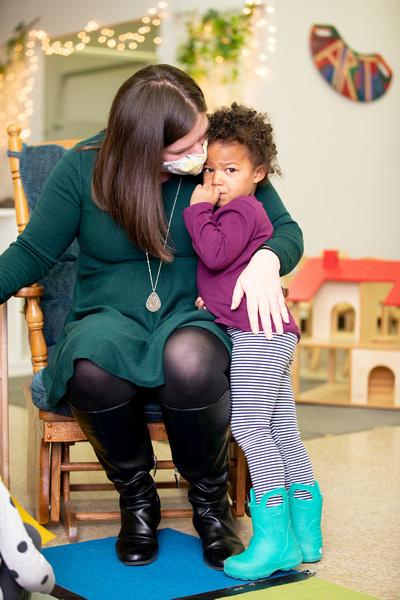
7.6Eliciting Language Through Conversations and Questions
Adult-child interactions give opportunities to observe, learn, and practice language skills. Even simple language conversations foster this growth. Consider the example of Imani’s exchange with her teacher. She said, “I no like it: go-fish.” Her teacher responded by acknowledging, “You do not like goldfish.” This strategy, known as expansion, fills in missing words and provides a model of language rules. A similar strategy, recasting, fills in what is missing, while also extending the child’s idea or changing the sentence structure. A child might exclaim, “Water, Cold!” The teacher may recast by asking a question, “Is the water cold?” Further recasting might cause the teacher to say, “You do not like this cold water on your hands!” With recasting, the child’s initial utterance may be changed from a statement to a question, or ideas extended and lengthened. Expansion and recasting provide language models for children who are multilingual and engaging in code-mixing to communicate their ideas. For example, a child may say, “Quiero milk.” The teacher may then respond by saying either “¿Quieres leche?” or “Would you like some milk?” Recasting provides a language model without overtly correcting the child. More importantly, it sends a message that the child is understood. These supportive interactions provide the cognitive stimulation, sensitivity, and responsiveness to help foster language (Hamre & Pianta, 2005) and support cognitive gains over time (Siraj & Asani, 2015).
The quality of the interaction is also a relevant component to consider. Interactions that emphasize close-ended or one-word responses reduce a child to answers that are brief and minimal (Pianta et al., 2012). “Did you go outside yesterday?” yields a shorter conversation than asking, “What did you do this weekend?” When children have opportunities to have longer back-and-forth conversations with open-ended questions, it naturally creates more opportunities for children to practice their conversational skills and to expand their thoughts (Pianta et al., 2012; Scull, Paatsch, & Raba, 2013). This approach is not merely helpful for individual children in each conversation, but there is a positive impact on the quality of the classroom environment (Hamre & Pianta, 2005). Sustained conversations promote enhanced language and literacy practices in the classroom overall (Justice et al., 2008).
One way to promote extended conversation is to use a model of Shared Sustained Thinking (Siraj & Asani, 2015). In Shared Sustained Thinking adults intentionally start teacher-child dialogues designed to expand answers and keep children engaged in conversation. Supportive shared conversations include solving problems together, clarifying concepts, evaluating activities, and the conversation extends as parties are thinking about their own ideas and knowledge. Helpful strategies for fostering supportive shared conversations are outlined in the table below, with verbal examples and non-verbal examples proposed by Siraj-Blatchford (2015) and expanded by the authors of this textbook.
Supporting Children’s Sustained Shared Thinking
|
Strategy |
Verbal Example |
Non-Verbal |
|---|---|---|
|
Tuning In |
Greeting the child and listening |
Body oriented toward child, bending over to near eye level to child |
|
Showing Genuine Interest |
Verbal affirmation |
Maintaining eye contact, smiling, nodding |
|
Respecting children’s own decisions and choices by inviting children to elaborate |
Saying things like, “I really want to know more about this.” |
Listening and engaging in the response |
|
Re-capping |
“So you think that…” |
Drawing picture together or as a depiction that you understand the conversation |
|
Offering the adult’s own experience |
I like to… |
Sharing photos or pictures |
|
Clarifying ideas |
“So you think that this stone will melt if I boil it in water?” |
Use facial gestures, such as a questioning expression |
|
Suggesting |
“Could we try doing it this way?” |
Pointing to item while smiling |
|
Reminding |
“Don’t forget that you said that this stone will melt if I boil it.” |
Tapping forgotten item |
|
Using encouragement to further thinking |
“You have really thought hard about where to put this door in the palace. Where will you put the windows?” |
Give your brain a kiss (kiss hand and then touch hand to head) |
|
Offering an alternative viewpoint |
“Maybe Goldilocks wasn’t naughty when she ate the porridge.” |
Showing another way to solve a problem (e.g., a different way of stacking blocks) |
|
Speculating |
“What do you think the three bears would do if Goldilocks knocked on their door and invited them to go on a picnic?” |
Act out pretend play and dress up scenarios |
|
Reciprocating |
“Thank goodness that you were wearing boots when you jumped in those puddles! Look at my feet. They are soaking wet!” |
Mirroring child’s gestures Varied, animated facial expressions |
|
Asking open-ended questions |
“How did you…?” “Why does this…?” “What happens next…?” “What do you think…?” “I wonder what would happen if…?” |
Using drawing for communication and indicating questions |
|
Modeling thinking |
“I have to think hard about what I will do this evening. I need to take my dog to the vet because he has a sore foot, take my library books back to the library, and buy some food for dinner tonight. But I won’t have time to do all of these things.” |
Demonstrating thoughtful examination of items or drawings by pausing first |
7.6Instructional Opportunities That Support Language Development
Dramatic play creates opportunities for children to engage with their peers and act out real life scenarios. Many early learning settings have dramatic play areas, including home living/kitchen, puppet stages, flannel sets, and temporary thematic spots, such as an apple orchard or mechanic’s garage. These types of activities foster opportunities for children to practice dialogue, use different voices, and experiment with conversational rhythms. Teachers may or may not join in, but having a richness of materials available in the environment can help children to engage in discussions with one another.

The ability of children to discriminate sounds and perceive rhythm and rhyme is associated with early reading ability. Nursery rhymes are particularly effective. They are short verses, making them easily repeatable. Children’s exposure to nursery rhymes is connected with spelling success in early grades (Dunst et al., 2011) and are particularly effective with English Language Learners (Prošić-Santovac, 2015). For example, “Jack be nimble, Jack be quick, Jack jump over the candlestick!” is easier for children to master and repeat than a longer poem. Even short poems allow for practicing tone of voice, inflection, grammar, and figurative language. These early attempts help build a foundation for language development. Hearing the sounds at the beginnings and endings of words helps children explore connecting these sounds to letters and prepares children for early reading (Rasinki & Zimmerman, 2013). As teachers introduce poems of different styles, they create opportunities for the children to enhance their vocabulary knowledge and to engage with their peers in addition to enjoying and celebrating language.
7.6Language Accessibility and Differentiated Supports
Assistive technology includes devices or services that help children with disabilities to engage in learning and social interactions (Lohmann et al., 2019). Common examples include sign language, picture communication boards, adapted books, and voice output communication devices (Lohmann et al., 2019; Skau & Cascella, 2006). Sign language provides a visual or tactile demonstration of spoken words and is used not only for children who are deaf or hard of hearing, but hearing children as well. A common strategy is to have parents and children learn 20 to 30 words that are useful for the child and their environments (Skau & Cascella, 2006). This approach allows children to be able to communicate and understand some of the most basic and fundamental concepts. In the same way, picture boards allow children to touch or point to words they hear or wish to say. These can be used at home or school and can be relatively easy to produce or reproduce by using computers and cardstock or poster boards. For example, a picture of clothing, toothbrush, breakfast, then a car can highlight the order of routine for a young child. This also allows the possibility for the child to ask for or about a portion of the routine as it is occurring by pointing to that same board. Story and song boards create opportunities to point to pictures as a story or song is being shared. This generates space for a non-verbal child to respond, repeat, and participate fully in a classroom environment. Using a communication board might also be effective for a verbal child that is bothered by noise, as a child could wear earphones to manage the noise, and still participate by pointing to a board. It works best to include interesting textures or even real objects attached to the board (Skau & Cascella, 2006). As an example, an educator telling the story of The Three Little Pigs enhances children’s understandings with the storyboard by affixing to the board a picture of a brick, a small stick, and a bit of straw or raffia. Teachers can also point to storyboards as an aided language simulation for all children by pointing to words and pictures to emphasize meaning while telling a story, “The first little pig built his house out of STRAW.”
Vocal output devices produce pre-recorded messages when children press a button or otherwise trigger a word (Lohmann et al, 2019, Skau & Cascella, 2006). The child activates the device to answer questions, prompt others to action, or otherwise communicate. A vocal output device could be used in the classroom to record phrases or lines from poetry, story, or song. When the class joins in the story or song, the child with the vocal output device can then also join in.
Use of tablets and smartphones for assistive communication purposes has increased more recently as these items have become more readily available (Lohmann et al., 2019). Smart devices can easily be used in a classroom as a way of helping to create vocal output for a story. For example, classmates or teachers could record voices on the phone or tablet, “And I will huff and puff and blow your house down!” The child using the technology could play it at the cue when everyone joins in. The voice recording could be the child, teacher, classmates, or even family members with some planning ahead. Use of smart technology for assistive communication is most effective when adults have positive beliefs about the use of these devices (Zajc et al., 2018). Similarly, teachers’ use and comfort integrating assistive technologies develops as they gain more experiences using adaptive technologies within young learners .
Key Take-Aways
Children’s language development depends on ample meaningful language experiences with peers and adults. These experiences allow children opportunities to express themselves and be understood. When educators and parents provide these opportunities they support children’s language development. Understanding typical language trajectories allows educators to anticipate children’s language needs and enrich language environments accordingly.
It is also important to understand differences in the developmental trajectories. Children who are English Language Learners might have some initial delays as they navigate a silent period of receptive language before becoming more expressive/productive. Home language retention and multilingualism results in cognitive gains and maintains important cultural ties. Children who are deaf and/or hard of hearing may have language delays depending on the severity of the hearing loss and the type and timing of intervention. All children with hearing loss benefit from social play opportunities as this strengthens productive language. Children who have autism may struggle with receptive and expressive language. Nonverbal cues may be particularly difficult for a child to master. Early intervention is helpful, not only for language development itself, but for the social transactions that take place. Shared conversations help to elicit growth in listening, speaking, and nonverbal communication. Assisted technology can help to bridge the gap when children need communication support.
Intentional educators promote children’s language development by attending to children’s individual differences, remaining culturally responsive, providing context and environmental supports, and using adaptive technologies that enhance children’s engagement. Children have a desire to communicate and a right to be understood. Language in its many forms allows this process to unfold.
Additional Resources
American Society for Deaf Children: https://deafchildren.org/parents-and-families/
American Speech-Language-Hearing Association: https://www.asha.org/
Autism Speaks: https://www.autismspeaks.org/
Bilingualism in the Early Years: What the Science Says: https://www.ncbi.nlm.nih.gov/pmc/articles/PMC6168212/
Center for Applied Linguistics: https://www.cal.org/
Chomsky’s Universal Grammar: https://thebrain.mcgill.ca/flash/capsules/outil_rouge06.html
Colorín Colorado: https://www.cal.org/
Components of Language and Reading Instruction:https://nche.ed.gov/wp-content/uploads/2018/11/read_ch5.doc
Division for Early Childhood of the Council for Exceptional Children: https://www.dec-sped.org/ei-ecse-standards
Language in Brief: https://www.asha.org/practice-portal/clinical-topics/spoken-language-disorders/language-in-brief/
Multilingualism: https://www.zerotothree.org/resources/2095-multilingualism
National Center on Deaf Blindness: https://www.nationaldb.org/
National Association for Education of Young Children: https://www.naeyc.org/
National Professional Development on Autism Spectrum Disorder: https://autismpdc.fpg.unc.edu/evidence-based-practices
Virginia Cross-Sector Professional Development: http://vcpd.net/
Virginia’s Early Learning and Development Standards: https://www.doe.virginia.gov/early-childhood/curriculum/va-elds-birth-5.pdf
References
American Speech, Language and Hearing Association (n.d.). Acquiring English as a second language: What’s normal and what’s not. https://www.asha.org/public/speech/development/easl/
Barnett, W.S., Yarosz, D.J., Thomas, J., Jung, K., & Blanco, D. (2007). Two-way and monolingual English immersion in preschool education: An experimental comparison. Early Childhood Research Quarterly, 22(3), 277–293.
Bates, E., Marchman, V., Thal, D., Fenson, L., Dale, P., Reznick, J. S., & Hartung, J. (1994). Developmental and stylistic variation in the composition of early vocabulary. Journal of Child Language, 21(1), 85–123. https://doi.org/10.1017/s0305000900008680
Bates, E., Thal D., & Janowsky J.S. (1992). Early language development and its neural correlates. In S. J. Segalowitz & I. Rapin (Eds.), Handbook of neuropsychology (Vol. 7), (pp. 69–110). Elsevier.
Bialystok, E. (2009). Bilingualism: The good, the bad, and the indifferent. Bilingualism: Language and Cognition, 12, 3–11.
Bloom, L., & Lahey, M. (1978). Language development and language disorders. Wiley.
Bonvillian, J. D., Orlansky, M. D., & Novack, L. L. (1983). Developmental milestones: Sign language acquisition and motor development. Child Development, 54(6), 1435–1445. https://doi-org.proxy-um.researchport.umd.edu/10.2307/1129806
Boutot, E. A., & Myles, B. S. (2017). Autism spectrum disorders: foundations, characteristics, and effective strategies. Pearson.
Castro. D. C., Garcia, E. E., & Markos, A.M. (2013). Dual language learners: Research informing policy. The University of North Carolina, Frank Porter Graham Child Development Institute, Center for Early Care and Education—Dual Language Learners. https://fpg.unc.edu/sites/fpg.unc.ed...olicyPaper.pdf
Celci-Murcia, M., & Olshtain, E. (2001). Discourse and context in language teaching: A guide for language teachers. Cambridge University Press.
Chomsky, N. (1968). Language and mind. Harcourt, Brace & World.
Conboy, B. T., & Kuhl, P.K. (2011). Impact of second-language experience in infancy: Brain measures of first- and second language speech perception. Developmental Science, 14, 242–248.
Conboy, B. T., & Mills, D.L. (2006). Two languages, one developing brain: Effects of vocabulary size on bilingual toddlers’ event-related potentials to auditory words. Developmental Science, 9(1), F1–F11.
De Feyter, J. J., & Winsler, A. (2009). The early developmental competencies and school readiness of low-income immigrant children: Influences of generation, race/ethnicity, and national origin. Early Childhood Research Quarterly, 24, 411–431.
de Oliveira Sobreira, A. C., Capo, B. M., Gil, D., & Dos Santos, T. S. (2015). Speech and language development in hearing impairment: Two-case report. Revista CEFAC, 17(1), 308–317.
Dunst, C. J., Meter, D., & Hamby, D. W. (2011). Relationship between young children’s nursery rhyme experiences and knowledge and phonological and print-related abilities. CELLreviews, 4(1), 1–12. http://www.earlyliteracylearning.org/cellreviews/cellreviews_v4_n1.pdf
Espinoza, L (2013). PreK-3rd: Challenging common myths about dual language learners. An update to the seminal 2008 report. Foundation for Child Development Policy to Action Brief. No. 10. https://www.fcd-us.org/prek-3rd-chal...ort/#node-1367
Fagan, Mary K. (2015). Why repetition? Repetitive babbling, auditory feedback, and cochlear implantation. Journal of Experimental Child Psychology, 137, 125–136. http://dx.doi.org/10.1016/j.jecp.2015.04.005
Fenson, L., Dale, P. S., Reznick, J. S., Bates, E., Thal, D. J., Pethick, S. J., Tomasello, M., Mervis, C.B., & Stiles, J. (1994). Variability in early communicative development. Monographs of the Society for Research in Child Development, 59(5). https://doi.org/10.2307/1166093
Fitch, A., Valadez, A., Ganea, P. A., Carter, A. S., & Kaldy, Z. (2019). Toddlers with autism spectrum disorder can use language to update their expectations about the world. Journal of Autism & Developmental Disorders, 49(2), 429–440.
Gonzalez, K., Cassel, T., Durocher, J., & Lee, A. (2017). Overview of autism spectrum disorders. In A. Boutot (Ed.), Autism spectrum disorders (2nd ed., pp. 1–20). Pearson Education.
Gratier, M., Devouche, E., Guellai, B., Infanti, R., Yilmaz, E., & Parlato-Oliveira, E. (2015). Early development of turn-taking in vocal interaction between mothers and infants. Frontiers in Psychology, 6. https://doi.org/10.3389/fpsyg.2015.01167
Halle, T., Hair, E., Wandner, L., McNamara, M., & Chien, N. (2012). Predictors and outcomes of early vs. later English language proficiency among English language learners. Early Childhood Research Quarterly, 27(1), 1–20. https://doi.org/10.1016/j.ecresq.2011.07.004
Hamre B. K., & Pianta R. C. (2005). Can instructional and emotional support in the first-grade classroom make a difference for children at risk of school failure? Child Development, 76(5), 949-67. https://doi: 10.1111/j.1467-8624.2005.00889.x.
Individuals with Disabilities Education Act, 20 U.S.C. Individuals with Disabilities Education Act, 20 U.S.C. § 1400 (2004)
Justice, L.M., Mashburn, A.J., Hamre, B.K., & Pianta, R.C. (2008). Quality of language and literacy instruction in preschool classrooms serving at-risk pupils. Early Childhood Research Quarterly, 23, 51–68.
Karmiloff, K., & Karmiloff-Smith, A. (2001). Pathways to language: From fetus to adolescent. The developing child series. Harvard University Press.
Koester, L. S., & Lahti-Harper, E. (2010). Mother-infant hearing status and intuitive parenting behaviors during the first 18 months. American Annals of the Deaf, 155(1), 5–18. https://doi.org/10.1353/aad.0.0134
Kuhl, P. K., Conboy, B. T., Padden, D., Nelson, T., & Pruitt, J. (2005). Early speech perception and later language development: Implications for the “critical period.” Language Learning and Development, 1(3-4), 237–264. https://doi.org/10.1207/s15473341lld0103&4_2
Lipkind, D., Bemis, D. K., Marcus, G. F., & Tchernichovski, O. (2013). Analysis of the development of phonetic syntax in infant babbling. Protocol Exchange. https://doi.org/10.1038/protex.2013.057
Lohmann, M. J., Hovey, K. A., Gauvreau, A. N., & Higgins, J. P. (2019) Using assistive technology tools to support learning in the inclusive preschool classroom. The Journal of Special Education Apprenticeship, 8(2), Article 5. https://scholarworks.lib.csusb.edu/josea/vol8/iss2/5
Marco, E.J., Hinkley, L.B, Hill, S.S., & Nagarajan, S.S. (2011). Sensory processing in autism: A review of neurophysiologic findings. Pediatric Research, 69(5 Pt 2), 48R–54R. https://doi:10.1203/PDR.0b013e3182130c54
Maenner M.J., Daniels, J., Shaw, K.A., Baio, J., Washington, A., Patrick, M., DiRienzo, M., Christenson, D.L., Wiggins, L.D., Pettygrove, S., Andrews, J.G., Lopez, M., Hudson, A., Baroud, T., Schwenk, Y., White, T., Robinson Rosenberg, C., Lee, L., Harrington, R.A., Huston, M., Hewitt, A., Esler, A., Hall-Lande, J., Poynter, J., Hallas-Muchow, L., Constantino, J.N., Fitzgerald, R.T., Zahorodny, W., Shenouda, J., Daniels, J.L., Warren, Z., Vehorn, A., Salinas, A., Durkin, M.S., & Dietz, P.M. (2016).Prevalence of Autism Spectrum Disorder Among Children Aged 8 Years — Autism and Developmental Disabilities Monitoring Network, 11 Sites, United States, 2014. Morbidity and Mortality Weekly Report Surveillance Summary 2020, 69(No. SS-4):1–12. https://doi.org/10.15585/mmwr.ss6706a1
Marno, H., Guellai, B., Vidal, Y., Franzoi, J., Nespor, M., & Mehler, J. (2016). Infants’ selectively pay attention to the information they receive from a native speaker of their language. Frontiers in Psychology, 7. https://doi.org/10.3389/fpsyg.2016.01150
Marschark, M. & Knoors, H. (2012). Educating deaf children: Language, cognition, and learning. Deafness and Education International, 14(3), 136–160.
Marschark, M.. & Wauters. L. (2008). Language comprehension and learning by deaf students. In M. Manschark & P C. Häuser (Eds.), Deaf Cognition: Foundations and Outcomes (pp. 309–350). Oxford University Press.
Masataka, N. (1998). Perception of motherese in Japanese sign language by 6-month-old hearing infants. Developmental Psychology, 34(2), 241–246. https://doi.org/10.1037/0012-1649.34.2.241
McManis, L. (2012). TeachSmart ELL Spanish by Hatch. Research Basis Whitepaper. Accessed online: https://www.hatchearlylearning.com/documents/teachsmart_ell_spanish_white.pdf
Menn, L., & Stoel-Gammon, C. (2005). Phonological development: Learning sounds and sound patterns. In J. B. Gleason (Ed)., The development of language (6th ed., pp. 39–61). Pearson.
Minai, U., Gustafson, K., Fiorentino, R., Jongman, A., & Sereno, J. (2017). Fetal rhythm-based language discrimination: A biomagnetometry study. Neuroreport, 28(10), 561–564. https://doi:10.1097/WNR.0000000000000794
Mitchell S., Brian J., Zwaigenbaum L, et al. (2006). Early language and communication development of infants later diagnosed with autism spectrum disorder. Journal of Developmental and Behavioral Pediatrics 27, 69–78.
Petersen, J. (1988). Word-internal code-switching constraints in a bilingual child’s grammar. Linguistics, 26(1), 479.
Peterson, N. R., Pisoni, D. B., & Miyamoto, R. T. (2010). Cochlear implants and spoken language processing abilities: Review and assessment of the literature. Restorative Neurology and Neuroscience, 28(2), 237–250. https://doi.org/10.3233/rnn-2010-0535
Pianta, R. C., Hamre, B. K., & Allen, J. P. (2012). Teacher-student relationships and engagement: Conceptualizing, measuring, and improving the capacity of classroom interactions. In S. L. Christenson, A. L. Reschly, & C. Wylie (Eds.), Handbook of research on student engagement (pp. 365–386). Springer Science Business Media. https://doi.org/10.1007/978-1-4614-2018-7_17
Prošić-Santovac, D. (2015). Making the match: Traditional nursery rhymes and teaching English to modern children. Children’s Literature in English Language Education, 3(1), 25–48. http://clelejournal.org/article-2-3/
Reinhartsen, D. B., Tapia, A. L., Watson, L., Crais, E., Bradley, C., Fairchild, J., Herring, A. H., & Daniels, J. (2019). Expressive dominant versus receptive dominant language patterns in young children: Findings from the study to explore early development. Journal of Autism & Developmental Disorders, 49(6), 2447–2460.
Schlesinger, H. S. (1978). The acquisition of bimodal language. In I.M. Schlesinger (Ed.) Sign Language of the deaf: Psychological, linguistic, and sociological perspectives (pp. 57–93). Academic Press.
Schlesinger, H. S., & Meadow, K. P., (1972). Sound and sign: Childhood deafness and mental health. University of California Press.
Siraj, I., & Asani, R. (2015). The role of sustained shared thinking, play and metacognition in young children’s learning. In S. Robson & S. Quinn (Eds.), The Routledge international handbook of young children’s thinking and understanding (pp. 407–415). Routledge.
Siraj-Blatchford, I. (2015, November 5). Quality interactions in the early years [Keynote address]. TACTYC Annual Conference, Cardiff , U.K. http://www.tactyc.org.uk/pdfs/2005conf_siraj.pdf
Skau, L., & Cascella, P. W. (2006). Using assistive technology to foster speech and language skills at home and in preschool. Teaching Exceptional Children, 38(6), 12–17. https://doi.org/10.1177/004005990603800602
Skinner, B. F. (1957). Verbal behavior. Appleton-Century-Crofts.
Stark R. E. (1986). Prespeech segmental feature development. In P. Fletcher & M. Garman (Eds.) Studies in Language Acquisi-tion (149–173). Cambridge University Press.
Toppelberg, C. O., & Shapiro, T. (2000). Language disorders: A 10-year research update review. Journal of the American Academy of Child and Adolescent Psychiatry, 39(2), 143–152. https://doi.org/10.1097/00004583-200002000-00011
Vihman, M. M., & Greenlee, M. (1987). Individual differences in phonological development. Journal of Speech, Language, and Hearing Research, 30(4), 503–521. https://doi.org/10.1044/jshr.3004.503
Volterra, V. , Iverson, J. M., & Castrataro, M. (2005). The development of gesture in hearing and deaf children. In B. Schick, M. Marschark & P. Spencer (Eds.), Advances in the sign language development of deaf children (pp. 46–70). Oxford University Press.
Vygotsky, L. S. (1978). Mind and society: The development of higher psychological processes. Harvard University Press.
Vygotsky, L. S. (1986). Thought and language. MIT Press.
Yoshinaga-Itano, C., Snyder, L. S., & Day, D. (1998). The relationship of language and symbolic play in children with hearing loss. Volta Review, 100(3),135.
Yoshinaga-Itano, C., Sedey, A. L., Mason, C. A., Wiggin, M., & Chung, W. (2020). Early intervention, parent talk, and pragmatic language in children with hearing loss. Pediatrics, 146, S270–S277.
Virginia Board of Education. (2021). Virginia’s early learning & development standards (ELDS): Birth-five learning guidelines. https://www.doe.virginia.gov/early-childhood/curriculum/va-elds-birth-5.pdf
Zajc, M., Istenič Starčič, A., Lebeničnik, M., & Gačnik, M. (2018). Tablet game-supported speech therapy embedded in children’s popular practices. Behaviour & Information Technology, 37(7), 693–702. https://doi-org.proxy-um.researchpor...X.2018.1474253
Zwaigenbaum L., Bryson S., Rogers T., et al. (2005). Behavioral manifestations of autism in the first year of life. International Journal of Developmental Neuroscience, 143–152.
Image Credits
Figure 7.1: Christine Schull and Kalyca Schultz. “Nested Literacy Model.” CC BY 2.0.
Additional Images
Image, Section 7.2a & 7.2b: Lucy La Croix. [Bird] CC BY 2.0.
Image, Section 7.2c: Longwood University. [Language Through Social Interaction] CC BY-NC-SA 2.0.
Image, Section 7.2c: Lucy La Croix. [Nest] CC BY 2.0.
Image, Section 7.2c: Lucy La Croix. [Branch] CC BY 2.0.
Image, Section 7.2d: Kalyca Schultz. [Reflection or Tool?] CC BY 2.0.
Image, Section 7.4a: Longwood University. [Receptive Language] CC BY-NC-SA 2.0.
Image, Section 7.5a: Kalyca Schultz. “Bilingual Child.” CC BY-SA 2.0, derivative image using Untitled Photograph (https://pxhere.com/en/photo/679270) by pxhere, CC0.
Image, Section 7.5b2: Longwood University. [Sign Language] CC BY-NC-SA 2.0.
Image, Section 7.6: Longwood University. [Attunement] CC BY-NC-SA 2.0.
Image, Section 7.6b : Longwood University. [Dramatic Play] CC BY-NC-SA 2.0.

